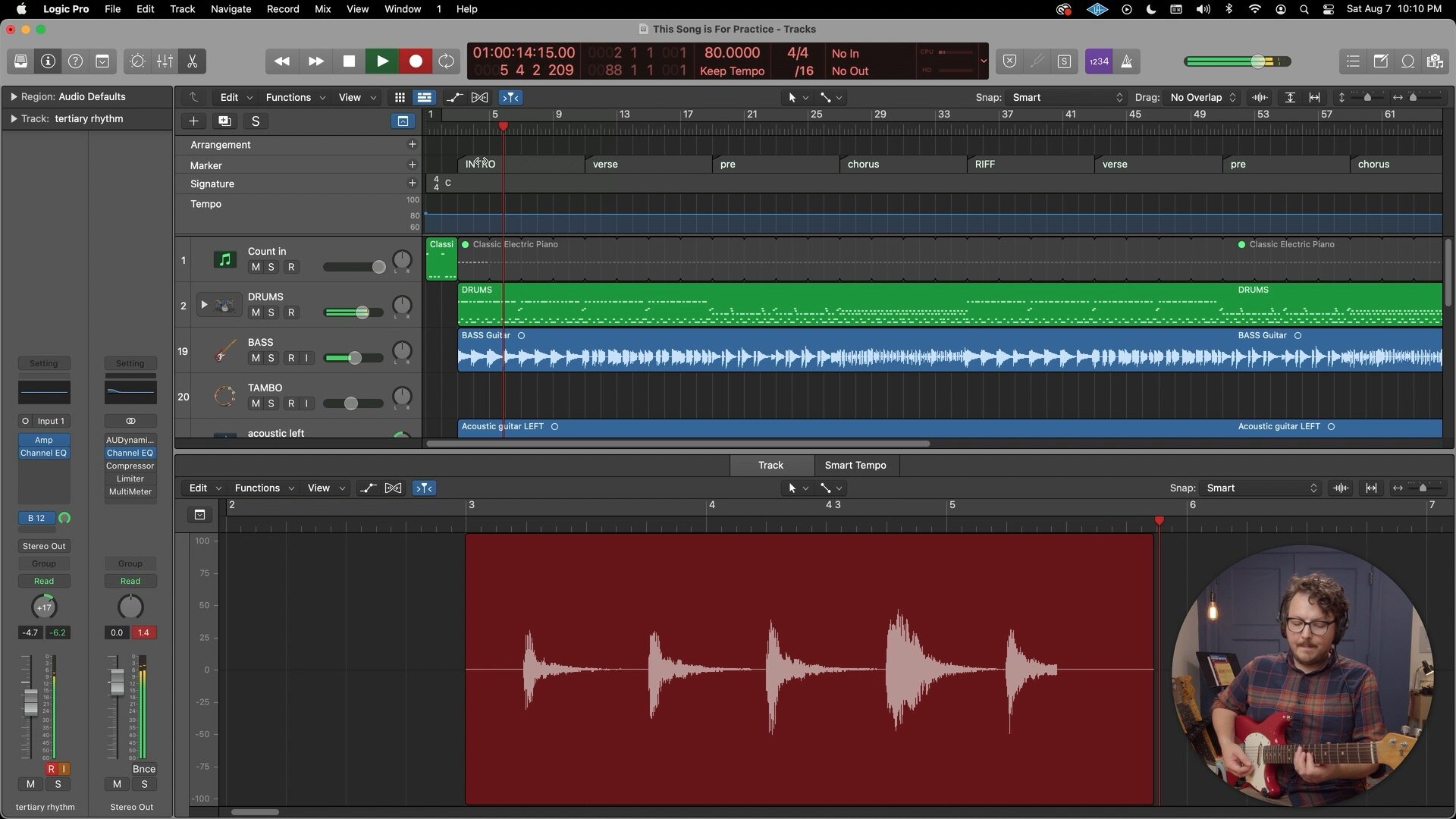


Lead Guitar | Melody, Fills, Rhythm, and Static Parts
This is a huge lesson about your roles when you play lead guitar. It's so big that I'm waiting to film the next until until people have questions about this one. Part of the reason it's so long is because I tried to give lots of examples on the guitar. This is the kind of lesson that might give you a few months of practice, so take your time, have fun, and even take a break and come back to these concepts later if you want to.
Rhythm Guitar | Tertiary Rhythm
In this Third installment of ROLES, we're talking about that weird situation where there are already a bunch of guitar players.... How do I play rhythm guitar if someone else is already playing rhythm guitar?
I give a few strategies and offer some basic homework: explore these two jam tracks (the Full Version and the Added Keys Version) and see if you can find a simple place to hang out in the mix. In general, you can't go wrong if you avoid those bottom strings, keep to a simple part, and try to fit in.
Remember, the track with added keys is designed to be difficult to find something to play. It's designed to force you to listen closely and play very sparsely. It's a little reminder that sometimes there is barely room to add anything, especially if there are already TWO people playing the role of rhythm.
Rhythm Guitar | Effects & Tonal Complexity
This is the second lesson in my Roles Series. In this one I'm discussing and exploring how it sounds when you add or subtract tonal complexity in your rhythm parts, and how effects pedals can help or hinder your efforts. You have a LOT of power to affect the way a song sounds as a rhythm guitarist, and this lesson is designed to help you discover and explore more options.
Rhythm Guitar | Introduction
This series has been in the back of my mind for a long time. In my weird brain, I've been scheming and planning and trying to map out a course about "what is my job when I play with others?" I've tried to start this series numerous times and it kept getting bigger and more detailed. I finally decided to just go for it.
In this first lesson, I lay out the goal of this series and dig right into the essence of rhythm guitar, which is difficult to tack down.
I have landed on these three fundamental elements of rhythm guitar:
1. To contribute to the dynamic intensity of the song
2. To clarify and hold down the tonality of the song (aka the chord progression)
3. To be the drums and/or accentuate the drums
Your homework for this lesson is:
1. Make your own dynamic maps for "This Song is for Practice" (links and PDF below) Be sure to write in the specific ways you'll be achieving your dynamic changes
2. Try out the variety of dynamic options for increasing or diminishing intensity
3. Have fun exploring options while you get familiar with "This Song is for Practice"




